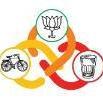Informatica Power Center Training - 50 Hours - $500 Per Student

By
D2trainings
in IT Jobs and Training
-
-
Popular Now
-
-
Tell a friend
-
-
Most viewed in last 30 days
-

-

-
 24
24CaptainMaverick · Started
-

-

-

-

-

-

-
-1.thumb.png.613bdd33b4e8b5f69ac815bf90e62a8b.png)
-
.thumb.jpg.ce42bb16ec102475a78c2087ce269c7d.jpg)
-

-

-

-

-

-

-

-

-

-




Recommended Posts
Join the conversation
You can post now and register later. If you have an account, sign in now to post with your account.